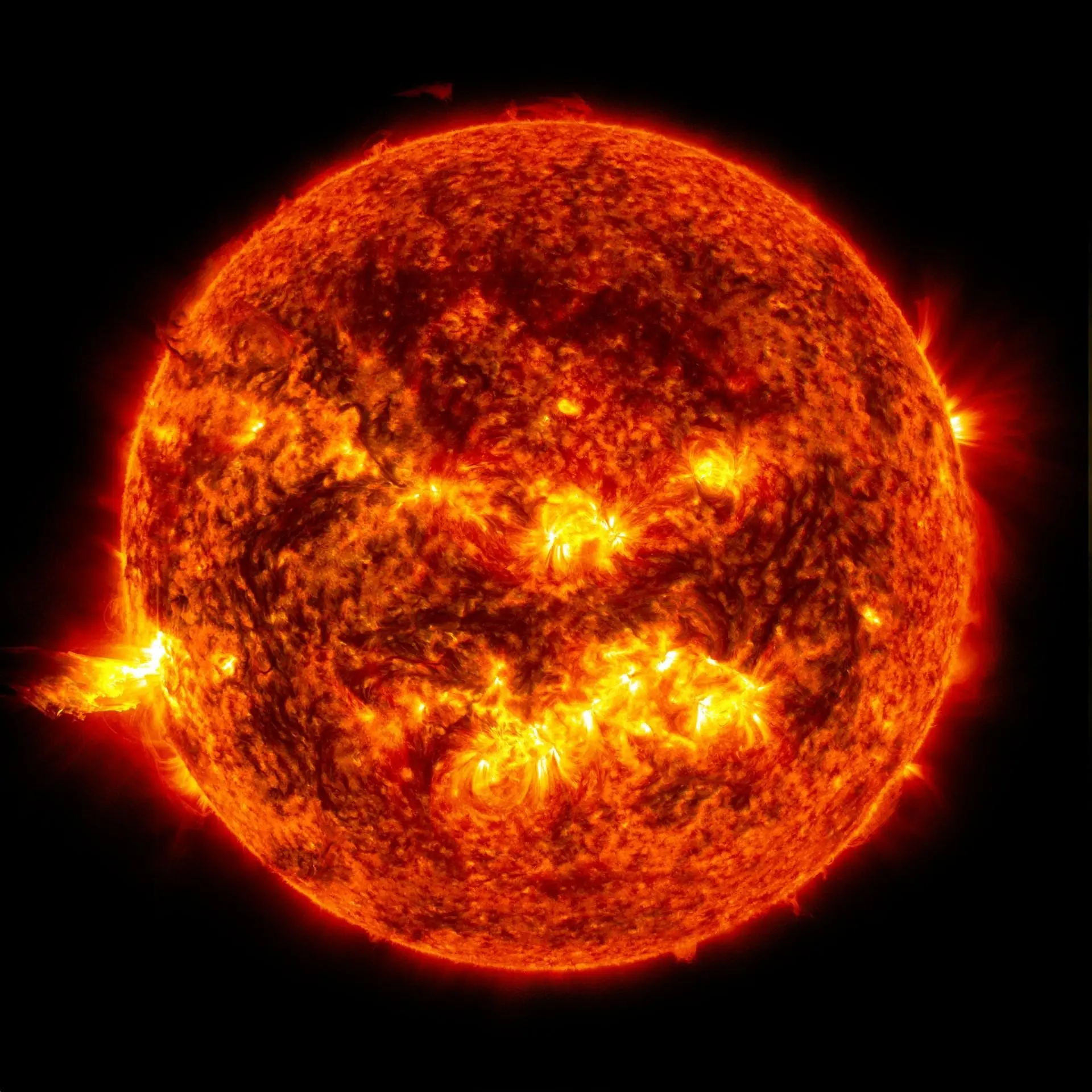For the first time in history, humanity has peered closer into the blazing heart of our star than ever thought possible. NASA’s Parker Solar Probe has delivered astonishing images and video of the sun’s surface and atmosphere, revealing mysteries that
On December 24, 2024, NASA’s Parker Solar Probe achieved what once seemed impossible: it ventured just 3.8 million miles (6.1 million kilometers) from the sun’s surface, flying directly into the star’s outermost atmosphere, known as the corona. This daring maneuver shattered previous records, as the spacecraft raced through space at a staggering speed of 430,000 miles per hour (690,000 kilometers per hour), making it the fastest human-made object ever built.
The historic flyby was not just about speed and distance—it was about discovery. For the first time, scientists could directly observe the birthplace of solar winds and other powerful forces that shape space weather and influence life on Earth.

The Closest Look at the Sun Ever Captured
Using its advanced Wide-Field Imager for Solar Probe (WISPR), Parker recorded breathtaking footage of the sun’s corona, offering humanity’s sharpest and closest view of the solar winds as they stream into space.
Nicky Fox, associate administrator for NASA’s Science Mission Directorate, described the achievement: “Parker Solar Probe has once again transported us into the dynamic atmosphere of our closest star. We are now seeing where threats to Earth’s space environment begin—directly with our own eyes, not just through computer models. This data is critical for improving space weather forecasts and ensuring the safety of astronauts, satellites, and technology across the solar system.”
Unlocking the Sun’s Secrets
Among the groundbreaking findings, WISPR images revealed a striking region called the heliospheric current sheet—a vast boundary where the sun’s magnetic field flips from north to south. For the first time in such detail, Parker also captured high-resolution footage of coronal mass ejections (CMEs) colliding with each other. These violent eruptions of charged particles are among the main causes of space weather events that can disrupt power grids, GPS, and communication systems on Earth.
Angelos Vourlidas, a WISPR scientist at Johns Hopkins Applied Physics Laboratory, explained: “In these images, we’re literally watching CMEs piling up on top of one another. This is helping us piece together how they merge and evolve, which is essential to predicting their impact on Earth.”
The Mystery of the Solar Wind
One of the Parker mission’s biggest goals is to answer a long-standing mystery: how solar winds—streams of charged particles constantly flowing from the sun—are generated and how they escape the star’s immense gravity.
Closer observations confirmed that there are indeed two varieties of slow solar wind:
- Alfvénic wind, which shows small magnetic “switchbacks,” or zig-zag patterns.
- Non-Alfvénic wind, which appears smoother and originates from different structures in the sun’s corona.
Scientists now believe that Alfvénic winds likely come from coronal holes—dark, cooler regions of the corona—while non-Alfvénic winds may emerge from helmet streamers, giant loops connecting active solar regions. These insights bring researchers closer than ever to solving one of astronomy’s most enduring puzzles.
Surviving the Sun’s Extreme Heat
Parker’s mission would be impossible without its groundbreaking Thermal Protection System (TPS)—a carbon-composite heat shield designed to withstand up to 3,000°F (1,650°C). Although the corona reaches several million degrees, it is so thin that Parker is exposed to relatively little actual heat. Still, the spacecraft’s forward shield faces searing temperatures of around 2,500°F (1,400°C) as it deflects energy away from its instruments.
This shield, coated in reflective white ceramic paint, ensures Parker can endure the harshest conditions of the solar system while remaining light enough to maintain record-breaking speeds.
A Mission That Redefines Our Place in the Universe
Before Parker, scientists could only study the sun from afar, relying on distant telescopes and indirect measurements. Now, for the first time, humanity has sent a machine directly into the solar corona, bringing back a wealth of data that will not only expand our understanding of stellar physics but also safeguard technology and human missions in deep space.
As mission scientist Adam Szabo of NASA’s Goddard Space Flight Center summarized: “We don’t have all the answers yet, but we now have an abundance of new, intriguing data. With Parker, we’re closer than ever to understanding how the solar wind begins and evolves.”
The Parker Solar Probe is more than a spacecraft—it is a pioneering leap into the unknown, helping us unlock the secrets of the star that makes life on Earth possible.







































